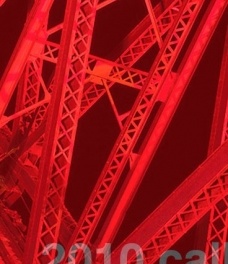
newspaper
selections
How does an increasingly enhanced complicity between author and audience affect design of urban spaces, architecture, interiors, and objects?
d3:dialog is a hybrid publication that combines the depth and format of a journal with the flexibility of a magazine. Each issue will explore a focused aspect of current architectural theory and production.
The first issue, d3:dialog>assemble, will cast its lens on the current relationship between information and production by asking: How does an increasingly enhanced complicity between author and audience affect design of urban spaces, architecture, interiors, and objects?
d3:dialog>assemble will be the launch edition of an
on-going, richly illustrated journey through avant-garde architecture and design.
d3:dialog is published by New York-based editor d3 and partially supported by organizational and individual sponsors.
2010 call
The cities and buildings that we inhabit represent temporal manifestations of mass, space, time, and memory. With the advent of digital methodologies, cities, buildings, and interior spaces may be conceived more fluidly in terms of information. This shift from analog means to digital systems of conceptual design and material production enables a more profound interaction between designer and audience. Likewise, an inability to separate the real from the digital has emerged., whereby these methods have converged to form part of the same process.
How can the development of 21st century urban space and architecture be conceptualized, controlled, and created? How do such environments grow, transition, and transform over time? How does the integration of digital conceptualization tools with physical matter produce increasingly fluid architectural forms, flexible spaces, and transformative assemblies?
The first volume of New York-based d3’s dialog series calls for work in architectural theory, design postulations, and built form that blurs the boundary between mapping and making of cities, buildings, spaces, and objects. Through d3:dialog>assemble, we shall collectively explore how such fusion occurs and how conventional methods remain relevant.
calendar
worlwide call announced
April 10, 2010
paper submission deadline
august 10, 2010
paper selecions announced
september 10, 2010
final edits due
october 10, 2010
typeset confirmed
november 10, 2010
journal printed
january 2011


